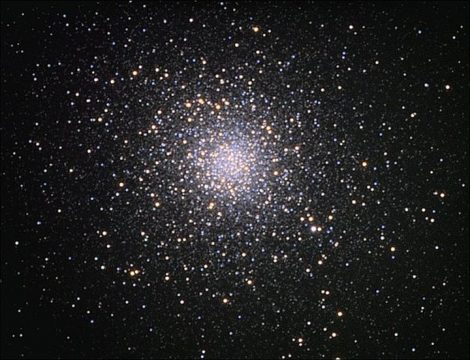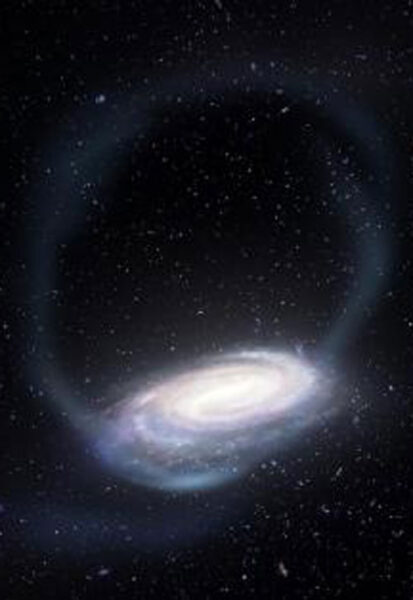A torn-apart globular cluster provides a window into the Milky Way’s past.
Globular clusters were among the first structures to form in the early universe. Some of these ancient stellar cities are still with us today, circulating in the outer regions of galaxies. Astronomers have spotted some 150 of them around the Milky Way, not constrained to the spiral-shape disk but orbiting far out in the galactic halo.

Robert J. Vanderbei
Oddly enough, though, the globular clusters we’ve catalogued so far do not count the oldest stars among their ranks. The most ancient stars found so far float alone, unaccompanied in the vast halo that surrounds the Milky Way. But now, Zhen Wan (University of Sydney, Australia) and colleagues have found the remnant of an older globular cluster: a stretched-apart stream of stars that are more ancient than any stars in existing globulars. The results appear in Nature.
From the Ashes
The stream, dubbed Phoenix, is marked by a thin, 8-degree arc of stars in the Southern Hemisphere constellation of the same name. The stars are about 62,000 light-years away. First discovered in the Dark Energy Survey, the stream received closer attention when Wan and his team followed up with a concerted observing effort via the Southern Stellar Streams Spectroscopic Survey.

James Josephides (Swinburne Astronomy Productions) / S5 Collaboration
The researchers gauged the stars’ ages by measuring their spectra, looking for the signature of heavier elements such as iron. Stars birthed in the early universe would have had few such heavy elements available. They were made almost entirely out of hydrogen and helium, until they started to fuse elements together in their cores. Later-born stars, on the other hand, come from gas increasingly enriched with heavier elements.
To the team’s surprise, the Phoenix stream stars had very low amounts of iron, lower than that measured in any star found in the Milky Way’s globular clusters. In other words, the globular cluster that the Milky Way’s gravity tore apart to create the Phoenix stream was more ancient than any such cluster our galaxy has today.
A Peek into the Past
“This is a very exciting result,” says Jo Bovy (University of Toronto), who was not involved in the study. “It’s a great confirmation of the fact that stellar streams give us insight in how stars and galaxies formed during the earliest epochs of the Milky Way's formation.”
Stellar streams form when dwarf galaxies and globular clusters fall too close to the Milky Way, their stars torn from each other and rearranged into long stellar streams that loop around the galaxy. We see only our galaxy’s more recent acquisitions, though. Over billions of years, gravitational interactions completely disrupt older structures, distributing their more ancient stars throughout the galactic halo. Streams thus provide a peek into our galaxy’s past.
So, as Bovy points out, perhaps it’s not surprising that stars of the disrupted Phoenix cluster would be older than intact globular clusters — the more ancient stars in the halo have to come from somewhere.
Nevertheless, the discovery of Phoenix is important for understanding our galaxy’s history, and the origin of its more pristine stars. “This initial population, of which Phoenix is the only remaining member, has effectively been completely lost, mixed with the other stars in the Milky Way,” says study coauthor Geraint Lewis (University of Sydney).
Because stellar streams like Phoenix are so hard to find, Bovy thinks there may be others that current instruments haven’t picked up just yet. “There are probably many more similar systems out there to be discovered by the next generation of surveys.”
 0
0
Comments
You must be logged in to post a comment.